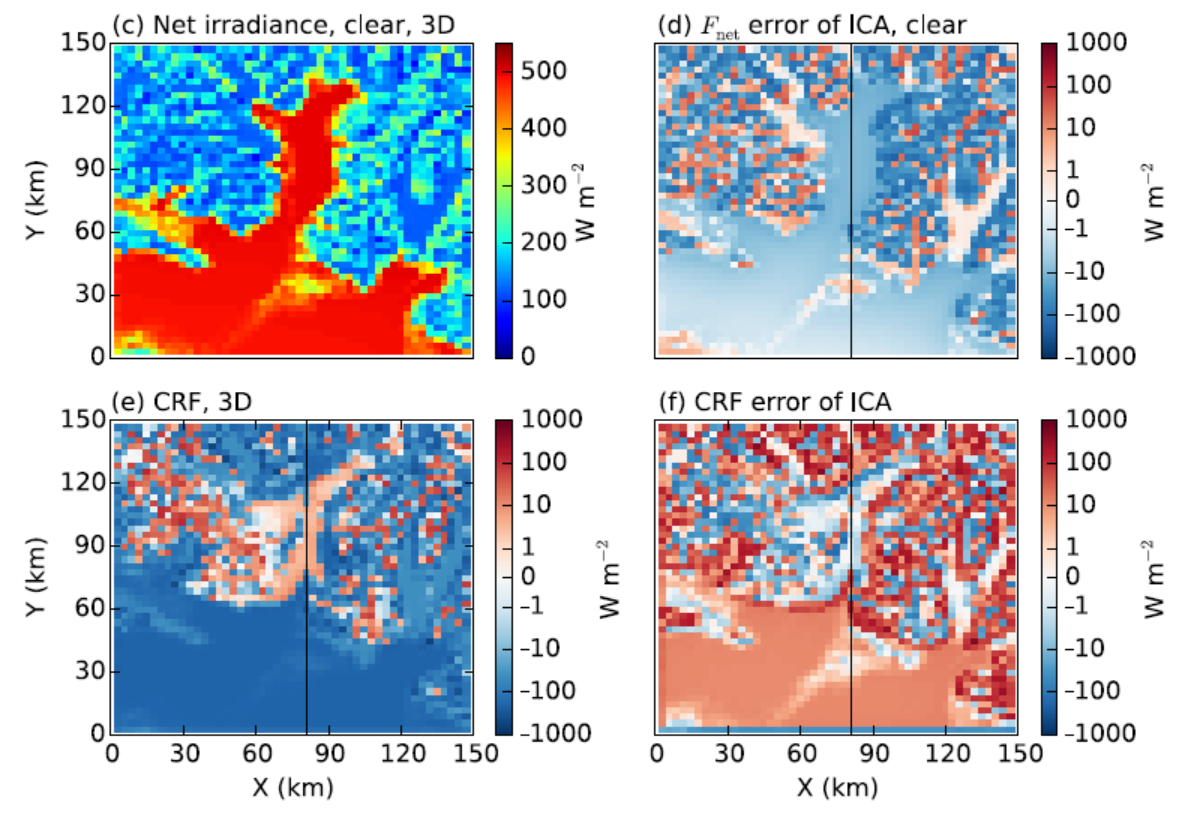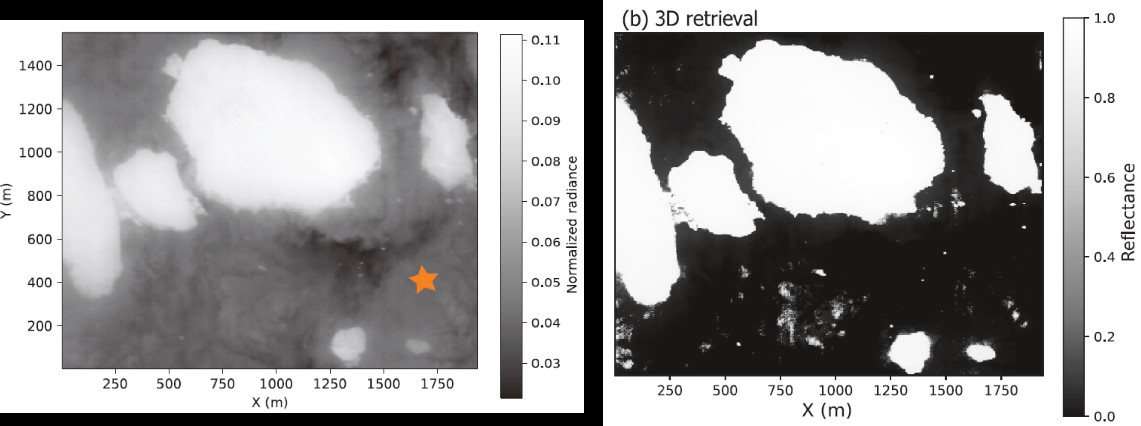
The surface reflection and atmospheric scattering are spatially inhomogeneous in nature, and the three-dimensional (3D) radiative transfer model is the key tool quantifying the effects atmosphere-surface inhomogeneities on radiative forcing and image blurring.
Recently, scientists of Hefei Institutes of Physical Science (HFIPS), Chinese Academy of Sciences and Leipziger Institut für Meteorologie (LIM) developed a new 3D radiative transfer model, which is called Light Estimator Including Polarization, Surface Inhomogeneities, and Clouds (LEIPSIC). It is utilized in a new atmospheric correction model considering the adjacent radiations from heterogeneous surface and clouds.
The research is published in Journal of Quantitative Spectroscopy and Radiative Transfer, and Remote Sensing of Environment.
In the development of the LEIPSIC model, scientists proposed a new biased sampling algorithm, called Separated-Near-Solar Local Estimation (SNSLE) to speed up the Monte Carlo calculation. Meso-scale cloud radiative forcing is simulated, considering the horizontal radiative transfer of the inhomogeneous clouds.
Further, in the application of atmospheric correction, researchers utilized the LEIPSIC model to study the influencing distance of adjacent radiation of bright surface, which is determined by the scale of bright surface, the equivalent altitudes of atmospheric scattering, the atmospheric optical thickness, and the solar-viewing geometry.
The adjacent radiation is corrected by introducing LEIPSIC in the iteration of dehazing.
The new correction model is applied in several simulated cases as well as a realistic measurement in Alaska, 2012. It is shown that the surface reflectivity recovery is accurate, and the visual sharpness of the blurred image improves significantly.
The two works were supported by the National Key R&D Program of China 2016YFE0201400, China Scholarship Council, and Deutsche Forschungsgemeinschaft (DFG, German Research Foundation) - Projektnummer 268020496 - TRR 172, within the Transregional Collaborative Research Center “ArctiC Amplification: Climate Relevant Atmospheric and SurfaCe Processes, and Feedback Mechanisms (AC3)”.

Fig. 1 The cloud radiative forcing and the calculation error of Independent Column Approximation (Image by SUN Bin)

Fig. 2 The radiance measurement in the ice-floe region, Alaska, 2012, and the sharpened image after atmospheric correction. (Image by SUN Bin)
Contact:
ZHAO Weiwei
Hefei Institutes of Physical Science (http://english.hf.cas.cn/)
Email: annyzhao@ipp.ac.cn